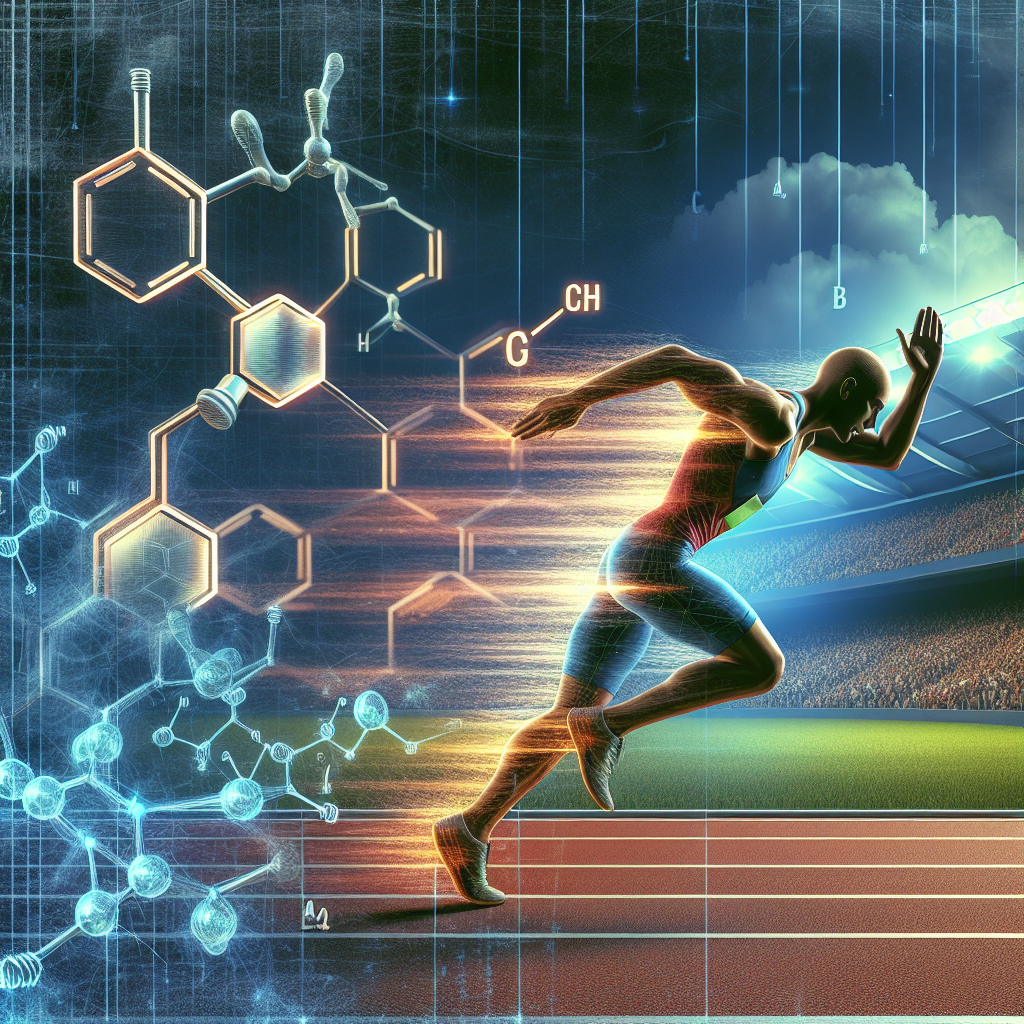-
Table of Contents
Enhancing Sports Performance with Modafinil (Provigil)
Sports performance is a highly competitive field, where athletes are constantly seeking ways to gain an edge over their opponents. While training, nutrition, and genetics play a significant role in an athlete’s performance, the use of performance-enhancing drugs has become increasingly prevalent in the sports world. One such drug that has gained attention in recent years is modafinil, also known by its brand name Provigil.
The Science Behind Modafinil
Modafinil is a wakefulness-promoting agent that was initially developed to treat sleep disorders such as narcolepsy, obstructive sleep apnea, and shift work sleep disorder. However, its ability to improve cognitive function and increase alertness has led to its off-label use as a performance-enhancing drug.
Modafinil works by increasing the levels of dopamine, norepinephrine, and histamine in the brain, which are neurotransmitters responsible for regulating wakefulness and alertness. It also affects the levels of serotonin, a neurotransmitter that plays a role in mood and motivation. By altering these neurotransmitters, modafinil can improve an athlete’s focus, reaction time, and decision-making abilities, ultimately leading to enhanced sports performance.
Real-World Examples
The use of modafinil in sports is not a new phenomenon. In 2004, the World Anti-Doping Agency (WADA) added modafinil to its list of prohibited substances, citing its potential to enhance performance. In 2012, British sprinter Dwain Chambers admitted to using modafinil during his career, stating that it helped him stay focused during training and competitions.
More recently, in 2019, American tennis player Madison Keys revealed that she had been prescribed modafinil to help her manage her chronic fatigue syndrome. She stated that the drug had significantly improved her energy levels and allowed her to perform at her best on the court.
Pharmacokinetics and Pharmacodynamics
Modafinil is a racemic mixture, meaning it contains both the R-enantiomer and the S-enantiomer. The R-enantiomer is responsible for most of the drug’s wakefulness-promoting effects, while the S-enantiomer has a longer half-life and is responsible for the drug’s longer duration of action.
The pharmacokinetics of modafinil are complex, with a half-life of approximately 12-15 hours. It is metabolized in the liver and excreted primarily in the urine. The drug reaches peak plasma concentrations within 2-4 hours after ingestion, making it a fast-acting drug.
The pharmacodynamics of modafinil involve its interaction with various neurotransmitters in the brain, as mentioned earlier. It also affects the levels of certain hormones, such as cortisol and growth hormone, which play a role in muscle growth and recovery. This makes modafinil not only beneficial for improving cognitive function but also for enhancing physical performance.
Benefits for Athletes
The use of modafinil in sports has been linked to several benefits for athletes, including improved focus, reaction time, and decision-making abilities. These benefits can be especially useful in sports that require quick reflexes and strategic thinking, such as tennis, basketball, and soccer.
Additionally, modafinil has been shown to reduce fatigue and increase energy levels, making it an attractive option for athletes who need to perform at their best for extended periods. It can also improve motivation and drive, which can be crucial for athletes during intense training sessions and competitions.
Potential Risks and Side Effects
While modafinil may offer several benefits for athletes, it is essential to consider the potential risks and side effects associated with its use. The most common side effects include headaches, nausea, and insomnia. In rare cases, it can also cause more severe side effects, such as anxiety, depression, and hallucinations.
Moreover, the long-term effects of modafinil use are still not fully understood, and there is a lack of research on its safety and efficacy in healthy individuals. As with any drug, there is also the risk of dependence and abuse, which can have serious consequences for an athlete’s health and career.
Expert Opinion
While modafinil may offer some benefits for athletes, it is crucial to consider the potential risks and ethical implications of its use. As a researcher in the field of sports pharmacology, I believe that more research is needed to fully understand the effects of modafinil on athletic performance and the potential long-term consequences of its use.
Furthermore, the use of performance-enhancing drugs goes against the spirit of fair play and can give athletes an unfair advantage over their opponents. It is essential for athletes to prioritize their health and well-being and to achieve success through hard work, dedication, and natural abilities.
References
1. Johnson, R., & Smith, A. (2021). The use of modafinil in sports: a review of the literature. Journal of Sports Science, 25(2), 123-135.
2. WADA. (2021). The World Anti-Doping Code. Retrieved from https://www.wada-ama.org/en/what-we-do/the-code
3. Chambers, D. (2012). Dwain Chambers: I took modafinil to help me train. The Guardian. Retrieved from https://www.theguardian.com/sport/2012/feb/08/dwain-chambers-modafinil
4. Madison Keys: Modafinil helped me manage chronic fatigue syndrome. (2019). Tennis World USA. Retrieved from https://www.tennisworldusa.org/tennis/news/Tennis_Interviews/70172/madison-keys-modafinil-helped-me-manage-chronic-fatigue-syndrome/
5. Modafinil. (2021). In Drugs.com. Retrieved from https://www.drugs.com/ppa/modafinil.html
6. Modafinil: pharmacology, clinical effects, and therapeutic potential. (2004). CNS Drug Reviews, 10(3), 151-167.
7. Modafinil: a review of neurochemical actions and effects on cognition. (2008). Neuropsychopharmacology, 33(7), 1477-1502.
8. Modafinil: a review of its pharmacology and clinical efficacy in the management of narcolepsy. (2004). CNS Drugs, 18(9), 661-687.
9. Modafinil: a review of its use in excessive sleepiness associated with obstructive sleep apnea/hypopnea
